Dr. Tim Anderson: The Dirty War on Syria, Chapter 3: Barrel Bombs, Partisan Sources and War Propaganda
![]()
//

Support for Pres. Assad remains surprisingly strong, giving the lie, once again, to the Western media falsifications and nonstop innuendos designed to isolate him.
INTRODUCTION BY DANIEL WIRT
The rise of ISIS and the presence of al-Qaida, this time both used by the US and its western allies to topple Assad, shows that the global war on terror is a sham.
 The Orwellian disinformation and lies about the situation in Syria and the Middle East and its causation have been chronically disseminated by the presstitutes in the mainstream media and the pro-imperialist “left” (referred to by some wags as the “Left Boots of NATO”) in alternative media.
The Orwellian disinformation and lies about the situation in Syria and the Middle East and its causation have been chronically disseminated by the presstitutes in the mainstream media and the pro-imperialist “left” (referred to by some wags as the “Left Boots of NATO”) in alternative media.
Thankfully, there are several exemplary exceptions in the alternative media —analysts, journalists and researchers doing careful, intellectually honest, evidence-based work. Dr. Tim Anderson, a Senior Lecturer in Political Economy at the University of Sydney is an epitome in this regard, clearly one of the world’s experts on the recent history of Syria.
Dr. Anderson is compiling many of his excellent, heavily-researched but highly readable articles on Syria (http://www.globalresearch.ca/author/tim-anderson) into an upcoming book, “The Dirty War on Syria.” These articles (chapters) are vitally important for anti-imperialists, and thus The Greanville Post will republish all of them serially, chapter-by-chapter. We urge The Greanville Post readers to read them and use them to counter the Orwellian disinformation campaign against Syria.
Please click below to review the chapters being planned for The Dirty War on Syria. This is essential for your proper comprehension of this topic.
The following text is Chapter 3 of Professor Tim Anderson’s forthcoming book entitled The Dirty War on Syria
“Barrel Bombs, Partisan Sources and War Propaganda”
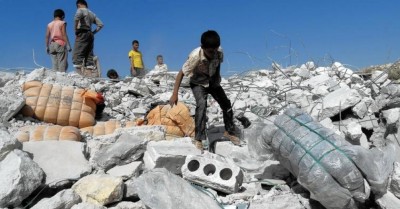
Normal ethical notions of avoiding conflicts of interest, searching for independent evidence and disqualifying self-serving claims from belligerent parties have been ignored in much of the western debate. This toxic atmosphere invites further fabrications, repeated to credulous audiences, even when the lies used to justify previous invasions (of Iraq in 2003) and dirty wars (in Libya, 2011) are still relatively fresh in our minds. As in previous wars, the aim is to demonise the enemy, by use of repeated atrocity claims, and so mobilise popular support behind the war (Knightley 2001).
Yet in circumstances of war adherence to some key principles is necessary when reading contentious evidence; at least if we wish to understand the truth of the matter. A belligerent party always has a vital interest in discrediting and delegitimising its opponent. For that reason, we must always view belligerent party ‘evidence’ against an opponent with grave suspicion. It is not that a warring party is incapable of understanding its opponent, rather what they say will always be conditioned by their special interest. We must assume bias. If there is no way to check the origin of that evidence, and if it is partisan and ‘self-serving’, it should be rejected as forensically worthless. This exclusion of ‘self-serving’ evidence follows broad principles applied in civil and criminal law. Such evidence only has value when it goes against the interest of the warring party, as with admissions, or when it says something about the mentality of the party putting it forward.
These principles apply whether speaking of the nature of wartime violence, of public opinion or political allegiance. So, for example, when Islamist armed groups and their associates claim that their mortal enemy the Syrian Arab Army is slaughtering civilians (e.g. AP 2015), that claim by itself is next to meaningless. We expect armed opponents to attack each other, with words as well as weapons. False stories of Government atrocities were in play from the beginning of the conflict. The head of a monastery in Homs, Mother Agnes-Mariam, denounced ‘false flag’ crimes by ‘Free Syrian Army’ groups back in 2011, where the images of murder victims were recycled in media setups by sectarian Islamists (SANA 2011). Similarly, US journalist Nir Rosen wrote of ‘dead opposition fighters … described as innocent civilians killed by security forces’ (Rosen 2012). What is the lesson here? Beware of partisan atrocity stories. They might at best serve as a flag, an accusation which might set in train a search for independent evidence.
For the same reason, when the Qatari monarchy (which has invested billions of dollars in the armed attacks on Syria) presents an anonymous, paid witness ‘Caesar’, with photos of numerous dead and tortured bodies, blaming the Syrian Army for ‘industrial scale killing’ (O’Toole 2014; Jalabi 2015), it should be plain that that ‘evidence’ is partisan and unreliable (Smith-Spark 2014; MMM 2014). The fact that this story was presented by a belligerent party just before a Geneva peace conference should give further cause for suspicion. But without genuinely independent evidence to corroborate the witness we have no way of verifying in which year, circumstance or even which country the photos were taken. Those who finance and arm the sectarian groups have slaughtered hundreds of thousands in recent years, in the wars in Afghanistan, Iraq and Syria. There is no shortage of photos of dead bodies. The fact that western media sources run these accusations, using lawyers (also paid by Qatar) to provide ‘bootstrap’ support (Cartalucci 2014; Murphy 2014), merely shows their limited understanding of independent evidence. [Or malicious and self-conscious adherence to Western propaganda memes.—Ed]
Similar principles apply to claims over legitimacy. Assertions by US Government officials, openly (and contrary to international law) seeking ‘regime change’ in Syria, that President Assad has ‘lost all legitimacy’ (e.g. Hillary Clinton in Al Jazeera 2011) should be seen as simply self-serving, partisan propaganda. In the case of Washington’s claims about the August 2013 chemical weapons attack in East Ghouta, the US Government and some of its embedded agencies attempted to use telemetry and some other circumstantial evidence to implicate the Syrian Army (Gladstone and Chivers 2013; HRW 2013). However, after those claims were destroyed by a range of independent evidence (Lloyd and Postol 2014; Hersh 2014; Anderson 2015), Washington and its media periphery simply kept repeating the same discredited accusations. In the climate of war, few were bold enough to say that the emperor ‘had no clothes’.
We might pay a little more attention when evidence from belligerent parties goes against their own interest. For example, in 2012 western media interviewed three Free Syrian Army (FSA) commanders in Aleppo. They all admitted they were hated by the local people and that the Syrian President had the loyalty of most. One said President Assad had about ‘70 percent’ support (Bayoumy 2013) in that mainly Sunni Muslim city. A second said the local people, ‘all of them, are loyal to the criminal Bashar, they inform on us’ (Abouzeid 2012). A third said they are ‘all informers … they hate us. They blame us for the destruction’ (Abdul-Ahad 2012). Although this is simply anecdotal evidence, because it runs against the interests of its sources it has greater significance than self-serving claims. Similarly, while NATO heads of government were claiming President Assad had ‘lost all legitimacy’, an internal NATO report estimated that 70% of Syrians supported the President, 20% were neutral and 10% supported the ‘rebels’ (World Tribune 2013; BIN 2013). While there is no public detail of the method behind this estimate, it has some significance in that it also runs against self-interest. It also roughly matches the outcome of the June 2014 Presidential elections, where Bashar al Assad gained 65% support from all eligible voters, that is, 88.7% of the vote from a 73.4% participation rate (Idea International 2015).

Rami Abdul Rahman: His lies —wittingly disseminated by the West—carry a high cost in human lives and the literal destruction of an entire region.
[dropcap]P[/dropcap]erhaps the most common and profound error of the western media, reporting on the Syrian crisis, has been the extraordinary reliance on a single person, a man based in Britain who calls himself the Syrian Observatory for Human Rights (SOHR). Many of the stories about Syrian body counts, ‘regime’ atrocities and huge collateral damage come from this man. Yet Rami Abdul Rahman has always flown the flag of the Muslim Brotherhood led ‘Free Syrian Army’ on his website (SOHR 2015). He claims to collect information from a network of associates in and around Syria. It is logical to assume these would also be mostly anti-Government people. Media channels which choose to rely on such an openly partisan source undermine their own credibility. Perhaps they don’t care? The fact that western governments generally support the Muslim Brotherhood line on Syria (a sectarian narrative against the secular state) may make them less concerned. They regularly present the SOHR stories, often with impressive-sounding casualty numbers, as though they were fact (e.g. AP 2015; Pollard 2015). A ‘regime’ denial may be added at paragraph 7 or 8, to give the impression of balanced journalism. Abdul Rahman’s occasional criticism of rival Salafist groups (such as DAESH-ISIL) perhaps adds a semblance of credibility. In any case, the unthinking adoption of these partisan reports has been important in keeping alive the western myth that the Syrian Army does little more than target and kill civilians.

Images of the purported chemical weapons attack by the Syrian army in Ghouta. The incident was later shown to have been organized by the Saudis, and carried out by the rebels. The truth however never reached Western public opinion and the damage was done—as intended.
Much the same problem can be seen in the campaigns over 2014-2015 against ‘barrel bombs’, where it has been said that a particular type of Syrian Air Force bomb (which includes fuel and shrapnel) has been responsible for massive civilian casualties. Robert Parry (2015) makes the point that any sort of improvised bomb ‘dropped from helicopters’ would be far less devastating and indiscriminate than most missile attacks, not to speak of the depleted uranium, napalm, white phosphorous and cluster munitions used by Washington. However the point here is not to do with the technology, it is simply a new way to generate horror and backing for the war, by claiming that the Syrian Army only ever kills civilians. The supposedly ‘indiscriminate’ nature of this ‘new’ weapon is merely suggested by repetition of the slogan.
[dropcap]Y[/dropcap]et the great majority of sites of these alleged ‘barrel bomb’ attacks, over 2014-2015, have been places occupied for years by sectarian Islamist gangs: north-eastern Aleppo, Douma in north-eastern Damascus and Raqqa in the eastern desert. The Washington-based Human Rights Watch (tightly linked to the US foreign policy body, the Council on Foreign Relations) published a map showing the sites of literally hundreds of these barrel bomb attacks in ‘opposition held’ north-east Aleppo (HRW 2014). The ‘opposition’ in these areas has been the official al Qaeda franchise in Syria, Jabhat al Nusra, allied with the Saudi-backed Islamic Front (a merger of former Free Syrian Army groups Harakat Ahrar as-Sham, Suqur as-Sham, Liwa at-Tawhid, Jaysh al-Islam, Jabhat al-Kurdiyya, Liwa al-Haqq and Ahrar as-Sham), then later the ‘Islamic State of Iraq and the Levant’ (ISIL), the Turkistan Islamic Party and the Army of Conquest. Virtually all of these groups are internationally proscribed terrorist organisations responsible for multiple atrocities in Syria. It is hardly surprising, then, that the Syrian Army regularly bombs the armed groups in these areas.
Contrary to the myth of the ‘moderate rebel’, the terrorist groups most often work together. For example, a top US-backed leader of the Free Syrian Army (FSA), Abdel Jabbar el-Okaidi, is quite open about the fact that he works closely with ISIL-Daesh (see Eretz Zen 2014). The FSA has worked closely with the other main al Qaeda group, Jabhat al Nusra, from the beginning.
The source of the ‘civilian’ death claims comes almost exclusively from the Islamist groups themselves, or ‘activists’ embedded with them. Those claims are then magnified by the western media and by some human rights NGOs which are effectively ‘embedded’ with western governments’ foreign policies. Casualty numbers are typically provided by the British-based ‘Syrian Observatory on Human Rights’ (SOHR 2015), the British-based Syrian Network for Human Rights (SN4HR 2015), or the Istanbul-based Violation Documentation Center in Syria (VDC 2015; Masi 2015). All these centres are allied to the Islamist gangs, but usually maintain some public distance from ISIL. The VDC has listed some ISIL causalities in Syria as ‘martyrs’ for the revolution (see Sterling 2015b.); but the key point is that they are all partisan voices, sectarian Islamists committed to overthrow of the Syrian state and thus highly motivated to vilify and lie about the Syrian Army.
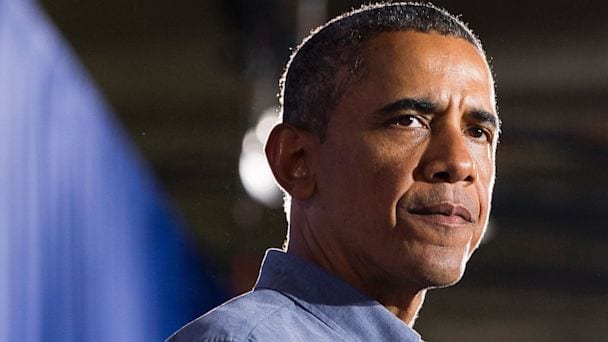
The Nobel Peace Prize laureate. The best we can say about this man is that he shamelessly engages in “crude and deceptive propaganda”.
Commander in Chief of the propaganda war, US President Obama, leads the way, claiming his Syrian counterpart ‘drops barrel bombs to massacre innocent children’ (Obama in Mosendz 2015). As there has never been any evidence that President Assad had any such intent, Parry (2015) is right to call this statement ‘crude and deceptive propaganda’. The White House is backed up by ‘embedded watchdog’ Human Rights Watch, whose boss Kenneth Roth obsessively repeats the words ‘barrel bombs’, and has even been exposed posting photos of devastated Gaza and Kobane, falsely claiming that both showed Aleppo after ‘Assad’s barrel bombing’ (MOA 2015; Interventions Watch 2015). In fact those photos showed the results of Israeli, US and ISIL bombing. The recycling of war dead photos seems to have become routine. Yet the foundation of western war propaganda is the consistent reliance on partisan sources. The ‘barrel bomb’ campaign is clearly designed to delegitimise the Syrian Government and the Syrian Army, and also perhaps to deter or slow the attacks on Islamist groups. However the Syrian Army does not apologise to anyone for bombing terrorist held areas.
[dropcap]M[/dropcap]ost civilians in the areas said to have been ‘barrel bombed’ left a very long time ago. In January 2015 Reuters (2015a) showed video of some of the last large evacuations of Douma by the Syrian Army. Several months later the same agency decried a massacre of ‘civilians’ in Douma, using the ‘activists’ of the SOHR as their source (Reuters 2015b). Repetition of these fake claims by the Islamists, their associated ‘activists’ and their western backers (for information on Avaaz, The White Helmets and the Syrian Campaign, see Sterling 2015a and Mint Press 2015) has led to headlines like: ‘The Syrian Regime’s Barrel Bombs Kill More Civilians than ISIS and Al Qaeda Combined’ (Masi 2015). Such stories suggest the need for more war on Syria. The photos of dead and injured women and children in the ghost towns inhabited by the armed groups are simply borrowed from other contexts. Amnesty International (USA) largely adopted the barrel bomb story, along with the invented ‘civilian’ casualty numbers. Yet Amnesty shares that same weakness in method: relying on partisan sources like the VDC, the SN4HR and the SOHR. Amnesty’s pro-western bias has led it into repeating NATO-contrived falsehoods in other conflicts, such as those in Kuwait and Libya (see Sterling 2015b).
None of this is to say that the Syrian Army has not killed civilians, particularly those embedded with the terrorist groups. However many Syrians, whose families have been directly affected by the terrorist attacks, question why the Government has not carpet-bombed areas like Douma, north-east Aleppo and Raqqa. They say the only civilians remaining there are those that support the throat-cutting gangs. The US certainly did not hesitate to carpet bomb the Iraqi resistance in Fallujah (Iraq), back in 2004 (Democracy Now (2005). Yet in Syria, as one former Russian-Syrian member of the Government militia said, things have been different:
‘Islamists [do] hide behind civilians. But if we really killed everyone who supported the enemy, the Douma district would have been destroyed long ago – simply leveled with tanks in a single day, like some [Syrian] hotheads have been [demanding] for a long time already. But Assad doesn’t want that … our task is to reunite the country. Therefore, before each mission, we were told that we should not shoot at civilians under any circumstances. If a civilian dies, there is always an investigation and, if necessary, a court-martial’ (Mizah 2015).
Such concerns are simply ignored in the self-obsessed and reckless western debate.
Great care is also needed with the claims of outsiders who run opinion polls in war-turn Syria. For example, although the British-based ORB International is not a government agency, it is financed within a hostile state and engages with debates of concern to the belligerent parties. Case in point: its mid-2014 poll suggested that ‘Three in Five Syrians Support International Military Involvement’ (ORB 2014: Table 1). This proposal is an issue that only really preoccupies western governments and the figure is implausible. First of all, those Syrians who support the government (by most accounts a strong majority of the population) have always opposed foreign intervention.
Second, most of the Syrian Opposition also opposes foreign intervention. The most comprehensive Syrian opposition document, the Damascus Declaration (2005), opposed both armed attacks on the government and foreign intervention. Only the Muslim Brotherhood, some exile figures and some of the Kurdish groups later split from this position. The suggestion that, after three years of war and tremendous suffering, which has already involved high levels of NATO and Gulf Monarchy intervention, 60% of Syrians want more of that sort of foreign intervention just does NOT sit with the known facts. It does fit with an unrepresentative poll which elevates the voices of those backing the armed groups. We need to look at the way ORB collects information.
Their methods are rather opaque. The British group carries out polls in Syria by employing small numbers of Syrians with whom they communicate by phone and internet. These local agents are then trained to select and interview small groups of people across Syria. ORB provides little information on how they select their agents or on how those people, in turn, select their interviewees.
They simply assert that their poll was representative. The mid-2014 poll claimed to have found that 4% of Syrians said the [Saudi Arabia-backed Islamist group] ISIS/Daesh ‘best represented the interests and aspirations of the Syrian people’ (ORB 2014). ISIL was, by then, the most prominent armed anti-Government group. That result (4% support) does seemed plausible, and not inconsistent with other information. But its reliability is undermined by the implausibly high level of support for foreign military intervention. A further anomaly is that the ORB poll of July 2015 showed ISIL to be viewed positively by 21% of Syrians (ORB 2015: Table 3). Although this was not exactly the same question, the difference between these figures (4% and 21%) is huge and hardly explicable by anything that had occurred between 2014 and 2015. No-one else has suggested that the fanatics of ISIL-Daesh are anything close to that popular. The 35% ‘net positive view’ of the terrorist group Jabhat al Nusra (ORB 2015), notorious for its suicide truck bombings and beheadings is also implausible. Indeed, how could one third of any society view ‘positively’ these terrorist organisations, best known for their atrocities? Something is very wrong here.
The only reasonable explanation is that serious bias affects the ‘representativeness’ of the ORB surveys. ORB was previously criticised by an academic paper for its opaque and ‘incomplete disclosure’ of method and ‘important irregularities’ in their estimates of deaths from the war in Iraq (Spagat and Dougherty 2010). That unreliability is present in their Syrian data. Despite what seems like highly inflated support for the al Qaeda groups, the 2015 poll still shows President Assad as the most positively viewed force in the country, although at only 47% (ORB 2015: Table 3), a figure much lower than that of any other poll (Syrian or non-Syrian) during the crisis. Interestingly, the ORB 2015 poll says 82% of Syrians believe ISIL was created by the US (ORB 2015: Table 20). However given the other anomalies of the survey it is not possible to place any reliance on this figure. It seems plain that the ORB polls, through their mostly undisclosed selection processes, have given an enhanced voice to anti-government people. That is perhaps not surprising, for a British company, and it may help reinforce popular discussion in western countries. However it does not help foreign understandings of Syria.
While it is important to recognise the sources of bias, the repetition of anti-Syrian stories based on partisan sources cannot be a matter of simple bias. We know from independent evidence that earlier claims of massacres were fabricated by the sectarian groups, then backed by Washington. This has been documented with respect to mass killings at Houla, Aqrab, Daraya, and East Ghouta (see Anderson 2015a and 2015b). After these exposures, there were no apologies or admissions either from the White House or the western media channels which ran the initial stories. This pattern means that other fabrications are likely. So while genuine students of the crisis must revert to principled study of claims and counter-claims, we should also recognise this industrial scale propaganda machine, which is likely to maintain its production into the foreseeable future.
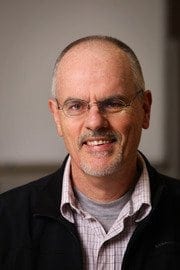 Dr Tim Anderson is a Senior Lecturer in Political Economy at the University of Sydney. He researches and writes on development, rights and self-determination in Latin America, the Asia-Pacific and the Middle East. He has published many dozens of chapters and articles in a range of academic books and journals. His last book was Land and Livelihoods in Papua New Guinea (Australian Scholarly Publishing, Melbourne, 2015).
Dr Tim Anderson is a Senior Lecturer in Political Economy at the University of Sydney. He researches and writes on development, rights and self-determination in Latin America, the Asia-Pacific and the Middle East. He has published many dozens of chapters and articles in a range of academic books and journals. His last book was Land and Livelihoods in Papua New Guinea (Australian Scholarly Publishing, Melbourne, 2015).DANIEL WIRT serves as Associate Editor with the Greanville Post. See more about Daniel here.
References
Al Jazeera (2011) ‘Clinton says Assad has ‘lost legitimacy’, 12 July, online: http://www.aljazeera.com/news/middleeast/2011/07/201171204030379613.html
Anderson, Tim (2015a) ‘The Houla Massacre Revisited: ‘Official Truth’ in the Dirty War on Syria’, Global Research, 24 March, online: http://www.globalresearch.ca/houla-revisited-official-truth-in-the-dirty-war-on-syria/5438441
Anderson, Tim (2015b) ‘Chemical Fabrications: East Ghouta and Syria’s Missing Children’, Global Research, 12 April, online: http://www.globalresearch.ca/chemical-fabrications-east-ghouta-and-syrias-missing-children/5442334
AP (2015) ‘Syrian army barrel-bomb attacks kill at least 70 in Aleppo, activists say’, The Guardian, Associated Press, 31 May, online: http://www.theguardian.com/world/2015/may/30/syrian-army-air-strikes-aleppo-islamic-state
Cartalucci, Tony (2014) ‘US Feigns “Horror” Over Cooked-Up Report on Syrian War They Engineered’, Land Destroyer Report, January, online: http://landdestroyer.blogspot.co.uk/2014/01/us-feigns-horror-over-cooked-up-report.html
Damascus Declaration (2005) ‘The Damascus Declaration for Democratic National Change’, English version in Joshua Landis blog ‘Syria Comment’, 1 November, online: http://faculty-staff.ou.edu/L/Joshua.M.Landis-1/syriablog/2005/11/damascus-declaration-in-english.htm
Democracy Now (2005) ‘Pentagon Reverses Position and Admits U.S. Troops Used White Phosphorus Against Iraqis in Fallujah’, 17 November, online: http://www.democracynow.org/2005/11/17/pentagon_reverses_position_and_admits_u
Eretz Zen (2014) ‘US Key Man in Syria Worked Closely with ISIL and Jabhat al-Nusra’, Youtube, 17 August, online: https://www.youtube.com/watch?v=piN_MNSis1E
Gladstone, Rick and C.J Chivers (2013) ‘Forensic Details in U.N. Report Point to Assad’s Use of Gas’, New York Times, 16 September, online: http://www.nytimes.com/2013/09/17/world/europe/syria-united-nations.html?_r=0&adxnnl=1&adxnnlx=1387381766-55AjTxhuELAeFSCuukA7Og
Hersh, Seymour (2014) ‘The Red Line and the Rat Line’, London Review of Books, 17 April, online: http://www.lrb.co.uk/v36/n08/seymour-m-hersh/the-red-line-and-the-rat-line
HRW (2013) ‘Attacks on Ghouta: Analysis of Alleged Use of Chemical Weapons in Syria’, Human Rights Watch, Washington, 10 September, online: http://www.hrw.org/reports/2013/09/10/attacks-ghouta
HRW (2014) ‘Syrian Government Bombardment of Opposition-held Districts in Aleppo’, Human Rights Watch, 30 July, online: https://www.hrw.org/video-photos/image/2014/07/30/syrian-government-bombardment-opposition-held-districts-aleppo
Idea International (2015) ‘Voter turnout data for Syrian Arab Republic’, online: http://www.idea.int/vt/countryview.cfm?id=210#pres
Interventions Watch (2015) ‘CEO of Human Rights Watch misattributes video of Gaza destruction’, 9 May, online: https://interventionswatch.wordpress.com/2015/05/09/ceo-of-human-rights-watch-misattributes-video-of-gaza-destruction/
Jalabi, Raya (2015) ‘Images of Syrian torture on display at UN: ‘It is imperative we do not look away’, The Guardian, 12 March, online: http://www.theguardian.com/world/2015/mar/11/images-syrian-torture-shock-new-yorkers-united-nations
Knightley, Phillip (2001) ‘The disinformation campaign’, The Guardian, 4 October, online: http://www.theguardian.com/education/2001/oct/04/socialsciences.highereducation
Lloyd, Richard and Theodore A. Postol (2014) ‘Possible Implications of Faulty US Technical Intelligence in the Damascus Nerve Agent Attack of August 21, 2013’, MIT, January 14, Washington DC, online: https://www.documentcloud.org/documents/1006045-possible-implications-of-bad-intelligence.html#storylink=relast
Masi, Alessandria (2015) ‘The Syrian Regime’s Barrel Bombs Kill More Civilians than ISIS and Al Qaeda Combined’, IBTimes, 18 August, online: http://www.ibtimes.com/syrian-regimes-barrel-bombs-kill-more-civilians-isis-al-qaeda-combined-2057392
Mint Press (2015) ‘US Propaganda War in Syria: Report Ties White Helmets to Foreign Intervention’, 11 September, online: http://www.mintpressnews.com/us-propaganda-war-in-syria-report-ties-white-helmets-to-foreign-intervention/209435/
Mizah, Michel (2015) ‘A Russian-Syrian volunteer talks about his experience in the “Shabiha” pro-Assad paramilitary’, interviewed by Arthur Avakov, Live Leak, 15 September, online: http://www.liveleak.com/view?i=992_1442362752
MOA (2015) ‘Human Rights Watch Again Accuses Syria Of “Barrel Bomb” Damage Done By Others’, Moon of Alabama, 9 May, online: http://www.moonofalabama.org/2015/05/human-rights-watch-again-accuses-syria-of-barrel-bomb-damage-done-by-others.html
Mosendz, Poll (2015) ‘The Full Transcript of President Obama’s Speech at the United Nations General Assembly’, Newsweek, 28 September, online: http://www.newsweek.com/read-full-transcript-president-obamas-speech-united-nations-general-assembly-377504
MMM (2014) ‘Fail Caesar: Exposing the Anti-Syria Photo Propaganda’, Monitor on massacre marketing’, 8 November, online: http://libyancivilwar.blogspot.com.au/2014/11/fail-caesar-exposing-anti-syria-photo.html
Murphy, Dan (2014) ‘Syria ‘smoking gun’ report warrants a careful read’, Christian Science Monitor, 21 January, online: http://www.csmonitor.com/World/Security-Watch/Backchannels/2014/0121/Syria-smoking-gun-report-warrants-a-careful-read
ORB (2014) ‘Three in Five Syrians Support International Military Involvement’, ORB International, July, online: http://www.opinion.co.uk/article.php?s=three-in-five-syrians-support-international-military-involvement
ORB (2015) ‘ORB/IIACSS poll in Syria and Iraq gives rare insight into public opinion’, ORB International, July, online: http://www.opinion.co.uk/article.php?s=orbiiacss-poll-in-iraq-and-syria-gives-rare-insight-into-public-opinion
O’Toole, Gavin (2014) ‘Syria regime’s ‘industrial scale killing’, Al Jazeera, 22 January, online; http://www.aljazeera.com/indepth/features/2014/01/syria-regime-industrial-scale-killing-2014122102439158738.html
Parry, Robert (2015) ‘Obama’s ludicrous ‘barrel bomb’ theme’, Consortium News, 30 September, online: https://consortiumnews.com/2015/09/30/obamas-ludicrous-barrel-bomb-theme/
Pollard, Ruth (2015) ‘Assad regime’s barrel bomb attacks caused many civilian deaths in Syria: UN Envoy’, Sydney Morning Herald, 23 July, [the headline suggests the UN envoy is the source of the ‘barrel bomb’ kills civilians story, in fact the SOHR is the source] online: http://www.smh.com.au/world/assad-regimes-barrel-bomb-attacks-caused-many-civilian-deaths-in-syria-un-envoy-20150722-giihvw.html
Reuters (2015) ‘Over 1,000 Syrian civilians evacuated from near Damascus’, Youtube, 17 January, online: https://www.youtube.com/watch?v=H-DstETWlTY
Reuters (2015b) ‘Air strikes near Damascus kill at least 80 people: activists’, 16 August, online: http://www.reuters.com/article/2015/08/16/us-mideast-crisis-syria-idUSKCN0QL0E320150816
Rosen, Nir (2012) ‘Q&A: Nir Rosen on Syria’s armed opposition’, Al Jazeera, 13 Feb, online: http://www.aljazeera.com/indepth/features/2012/02/201221315020166516.html
SANA (2011) ‘Mother Agnes Merriam al-Saleeb: Nameless Gunmen Possessing Advanced Firearms Terrorize Citizens and Security in Syria’, Syrian Free
Mosendz, Poll (2015) ‘The Full Transcript of President Obama’s Speech at the United Nations General Assembly’, Newsweek, 28 September, online: http://www.newsweek.com/read-full-transcript-president-obamas-speech-united-nations-general-assembly-377504
MMM (2014) ‘Fail Caesar: Exposing the Anti-Syria Photo Propaganda’, Monitor on massacre marketing’, 8 November, online: http://libyancivilwar.blogspot.com.au/2014/11/fail-caesar-exposing-anti-syria-photo.html
Murphy, Dan (2014) ‘Syria ‘smoking gun’ report warrants a careful read’, Christian Science Monitor, 21 January, online: http://www.csmonitor.com/World/Security-Watch/Backchannels/2014/0121/Syria-smoking-gun-report-warrants-a-careful-read
ORB (2014) ‘Three in Five Syrians Support International Military Involvement’, ORB International, July, online: http://www.opinion.co.uk/article.php?s=three-in-five-syrians-support-international-military-involvement
ORB (2015) ‘ORB/IIACSS poll in Syria and Iraq gives rare insight into public opinion’, ORB International, July, online: http://www.opinion.co.uk/article.php?s=orbiiacss-poll-in-iraq-and-syria-gives-rare-insight-into-public-opinion
O’Toole, Gavin (2014) ‘Syria regime’s ‘industrial scale killing’, Al Jazeera, 22 January, online; http://www.aljazeera.com/indepth/features/2014/01/syria-regime-industrial-scale-killing-2014122102439158738.html
Parry, Robert (2015) ‘Obama’s ludicrous ‘barrel bomb’ theme’, Consortium News, 30 September, online: https://consortiumnews.com/2015/09/30/obamas-ludicrous-barrel-bomb-theme/
Pollard, Ruth (2015) ‘Assad regime’s barrel bomb attacks caused many civilian deaths in Syria: UN Envoy’, Sydney Morning Herald, 23 July, [the headline suggests the UN envoy is the source of the ‘barrel bomb’ kills civilians story, in fact the SOHR is the source] online: http://www.smh.com.au/world/assad-regimes-barrel-bomb-attacks-caused-many-civilian-deaths-in-syria-un-envoy-20150722-giihvw.html
Reuters (2015) ‘Over 1,000 Syrian civilians evacuated from near Damascus’, Youtube, 17 January, online: https://www.youtube.com/watch?v=H-DstETWlTY
Reuters (2015b) ‘Air strikes near Damascus kill at least 80 people: activists’, 16 August, online: http://www.reuters.com/article/2015/08/16/us-mideast-crisis-syria-idUSKCN0QL0E320150816
Rosen, Nir (2012) ‘Q&A: Nir Rosen on Syria’s armed opposition’, Al Jazeera, 13 Feb, online: http://www.aljazeera.com/indepth/features/2012/02/201221315020166516.html
SANA (2011) ‘Mother Agnes Merriam al-Saleeb: Nameless Gunmen Possessing Advanced Firearms Terrorize Citizens and Security in Syria’, Syrian Free Press Network, 19 November, online: http://syrianfreepress.wordpress.com/2011/11/19/mother-agnes-merriam-al-saleeb-nameless-gunmen-possessing-advanced-firearms-terrorize-citizens-and-security-in-syria/
Smith-Spark, Laura (2014) ‘Syria: Photos charging mass torture by regime ‘fake’’, CNN, 23 January, online: http://edition.cnn.com/2014/01/22/world/meast/syria-torture-photos/
SN4HR (2015) Syrian Network for Human Rights, online: http://sn4hr.org/
Sterling, Rick (2015a) ‘Humanitarians for war on Syria’, Counter Punch, 31 March, online: http://www.counterpunch.org/2015/03/31/humanitarians-for-war-on-syria/
Sterling, Rick (2015b) ‘Eight Problems with Amnesty’s Report on Aleppo Syria’, Dissident Voice, 14 May, online: http://dissidentvoice.org/2015/05/eight-problems-with-amnestys-report-on-aleppo-syria/
SOHR (2015) ‘Syrian Observatory for Human Rights’, online: http://www.syriahr.com/en/
Spagat, Michael and Josh Dougherty (2010) ‘Conflict Deaths in Iraq: A Methodological Critique of the ORB Survey Estimate’, Survey Research Methods, Vol 4 No 1, 3-15
VDC (2015) ‘Violation Documentation Center in Syria’, online: https://www.vdc-sy.info/index.php/en/
The original source of this article is Global Research
Note to Commenters
Due to severe hacking attacks in the recent past that brought our site down for up to 11 days with considerable loss of circulation, we exercise extreme caution in the comments we publish, as the comment box has been one of the main arteries to inject malicious code. Because of that comments may not appear immediately, but rest assured that if you are a legitimate commenter your opinion will be published within 24 hours. If your comment fails to appear, and you wish to reach us directly, send us a mail at: editor@greanvillepost.com
We apologize for this inconvenience.
Nauseated by the
vile corporate media?
Had enough of their lies, escapism,
omissions and relentless manipulation?
Send a donation to
The Greanville Post–or
But be sure to support YOUR media.
If you don’t, who will?




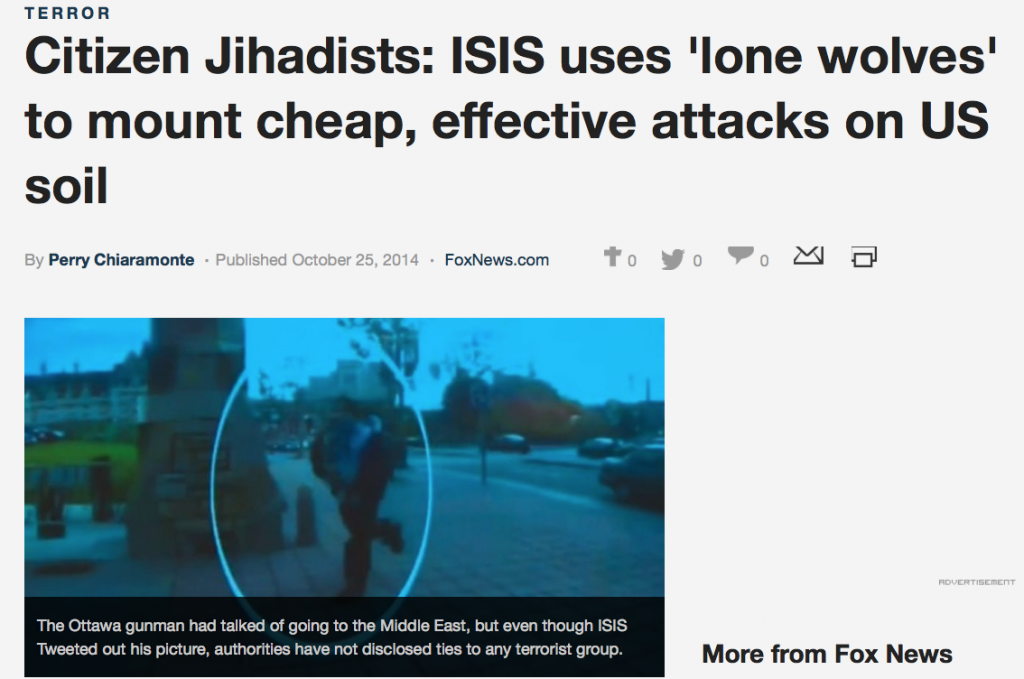
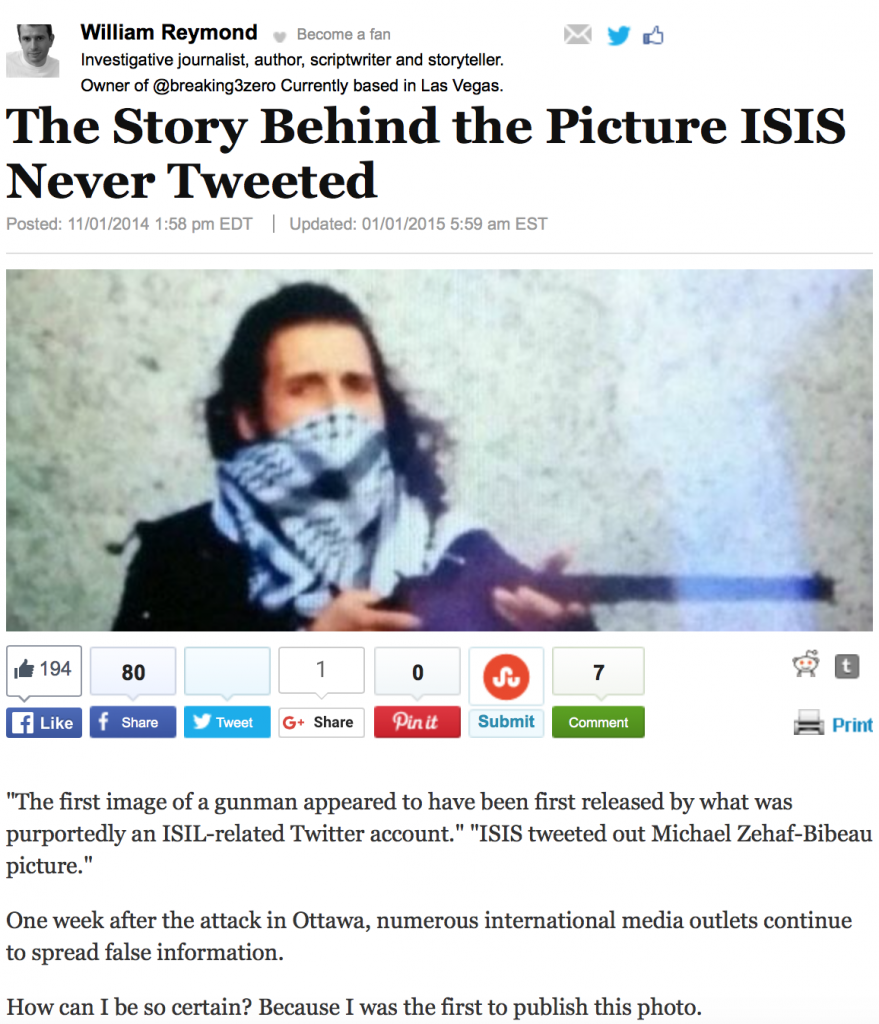
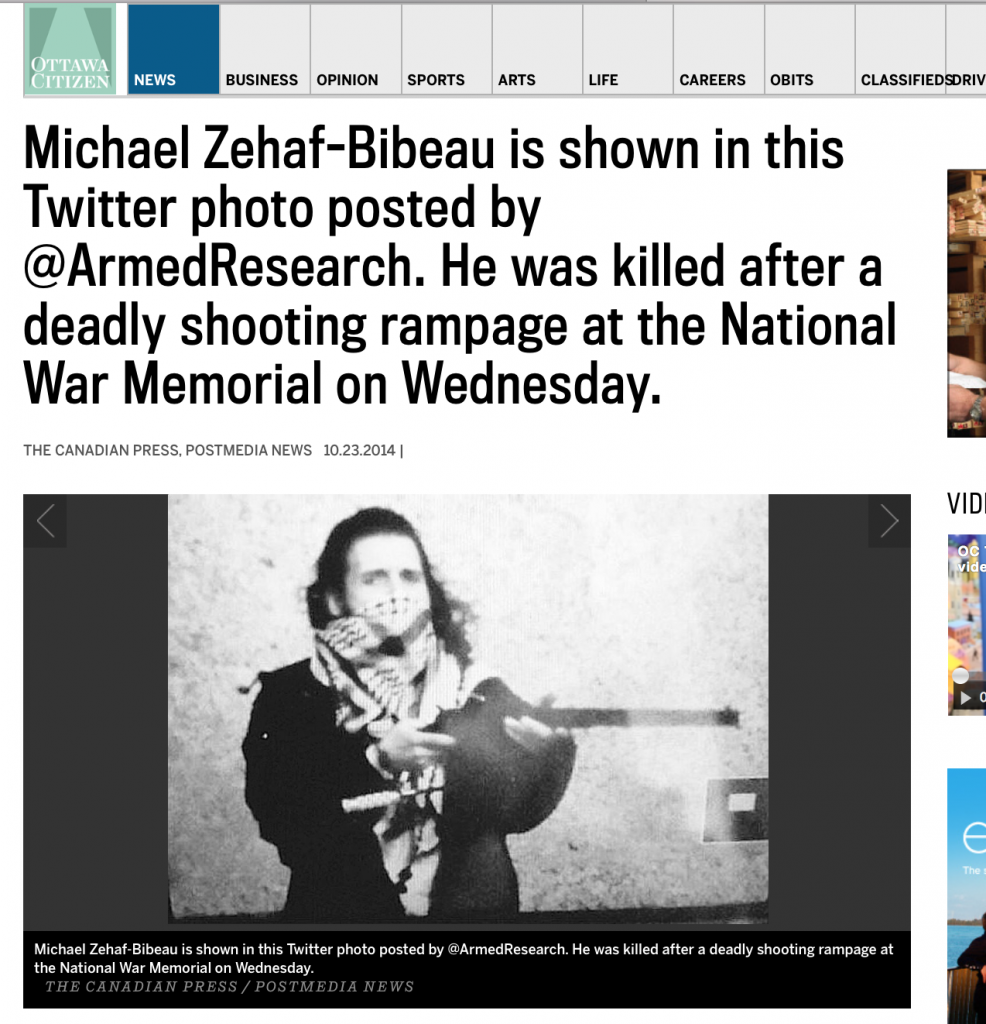



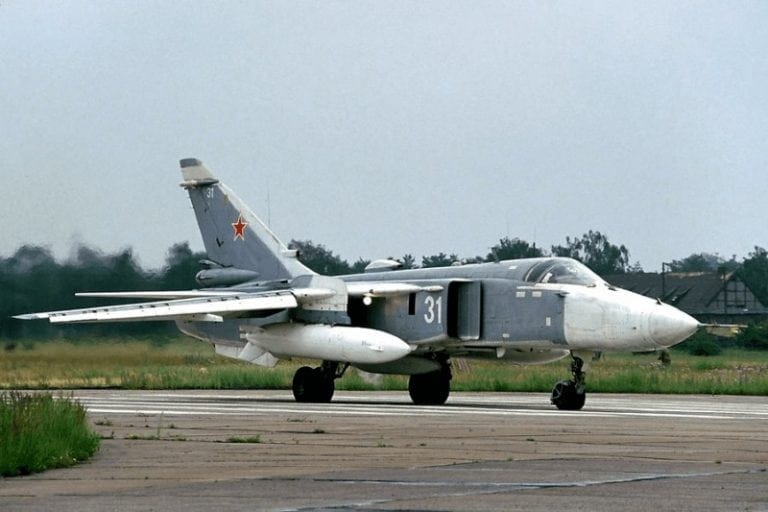

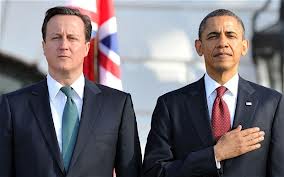

Turkey’s shooting down of a Russian jet near its border with Syria has just revealed the real nature of the war, writes Oliver Tickell, and sharply illustrates the dangers of getting involved in a conflict that is driven more by a battle of two gas pipelines than a clash of ideologies. The message for the UK – keep well out! Or if we are serious about crushing IS, best join in with Assad and Putin.